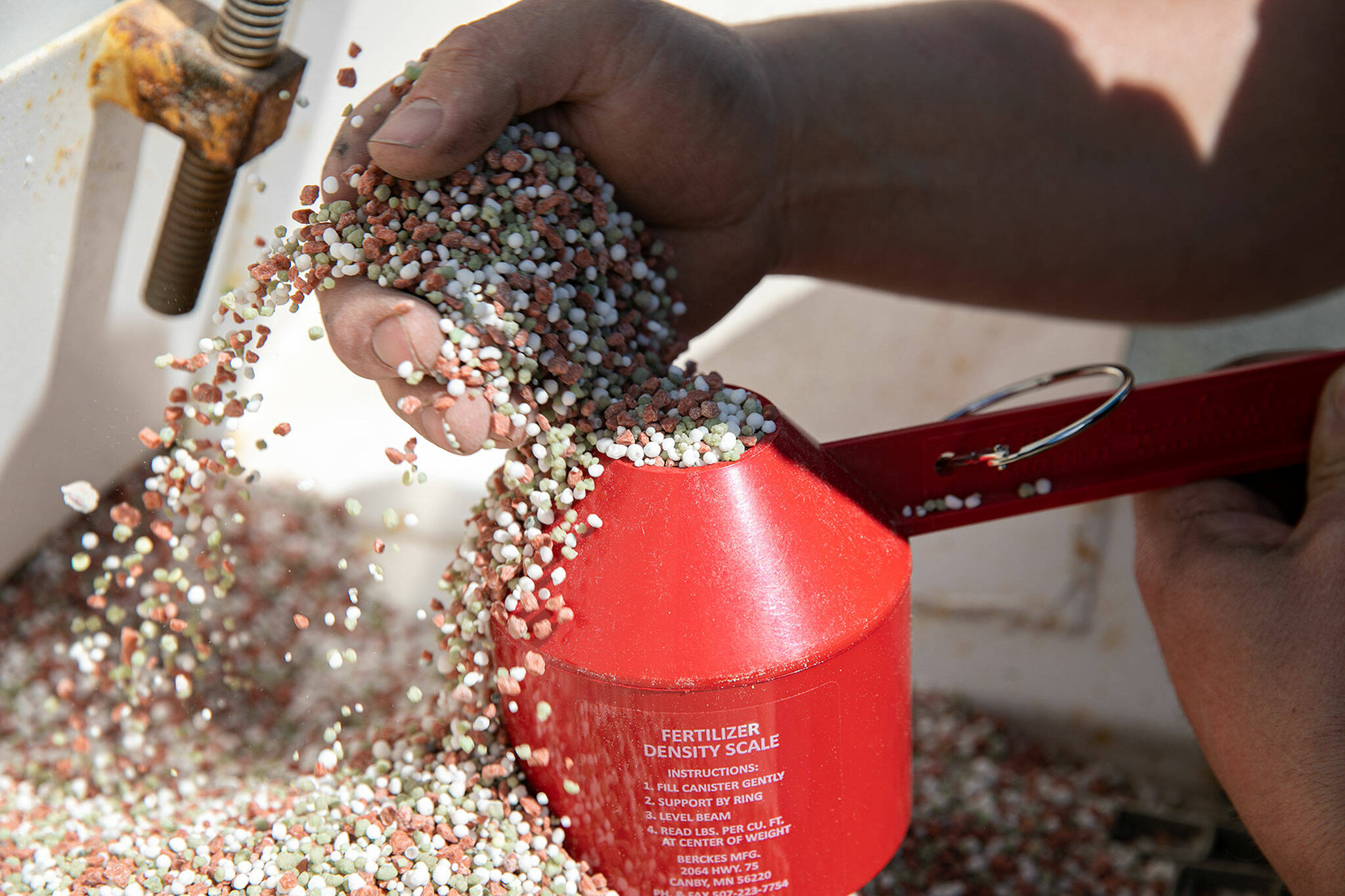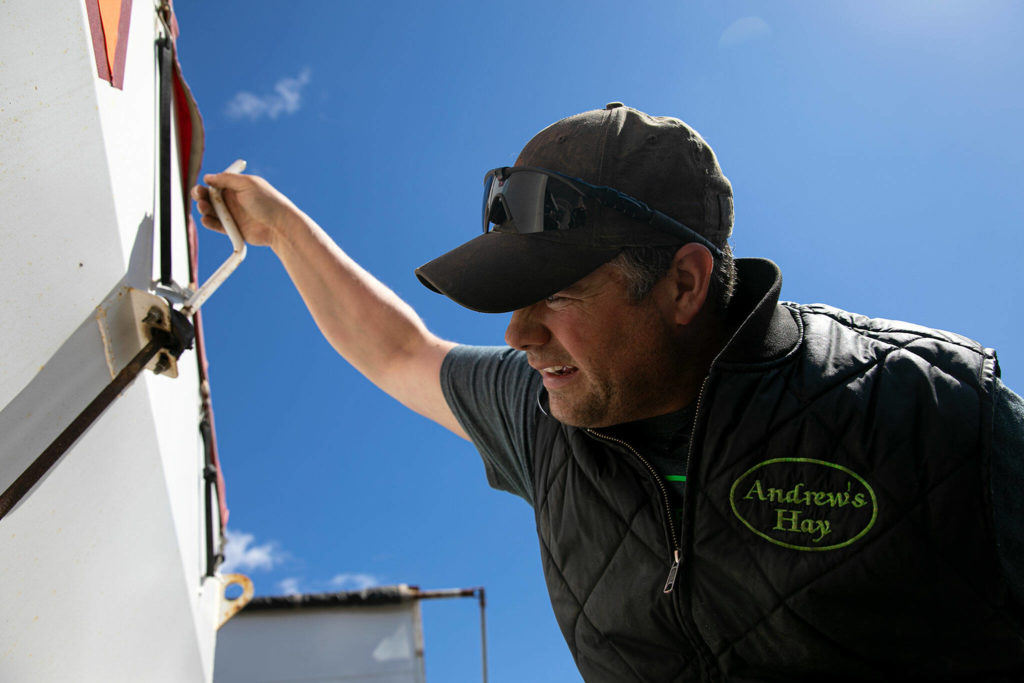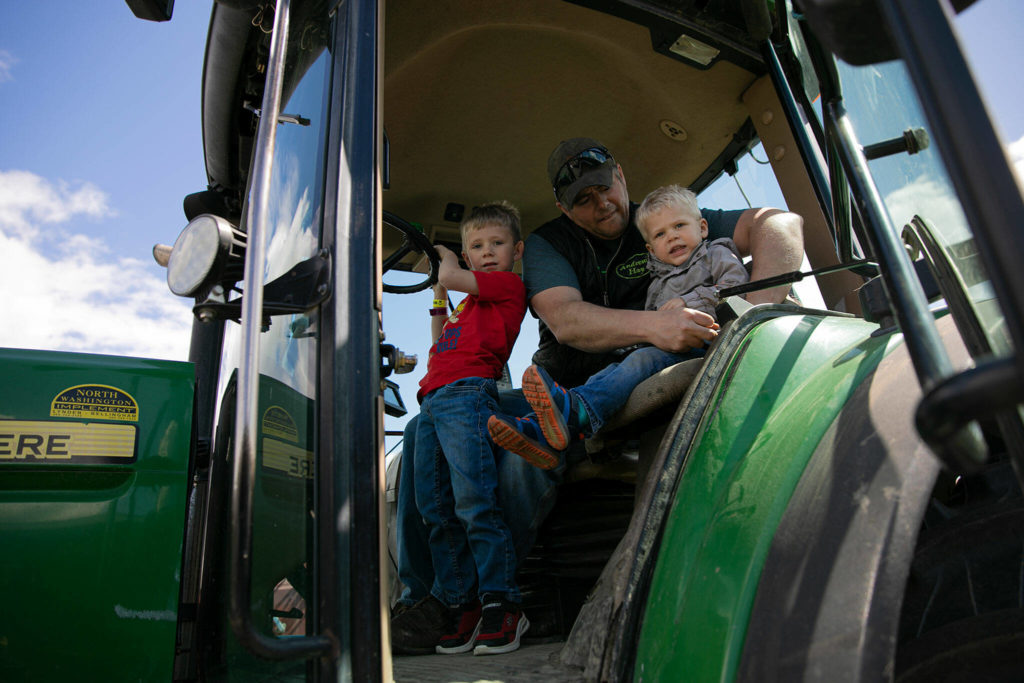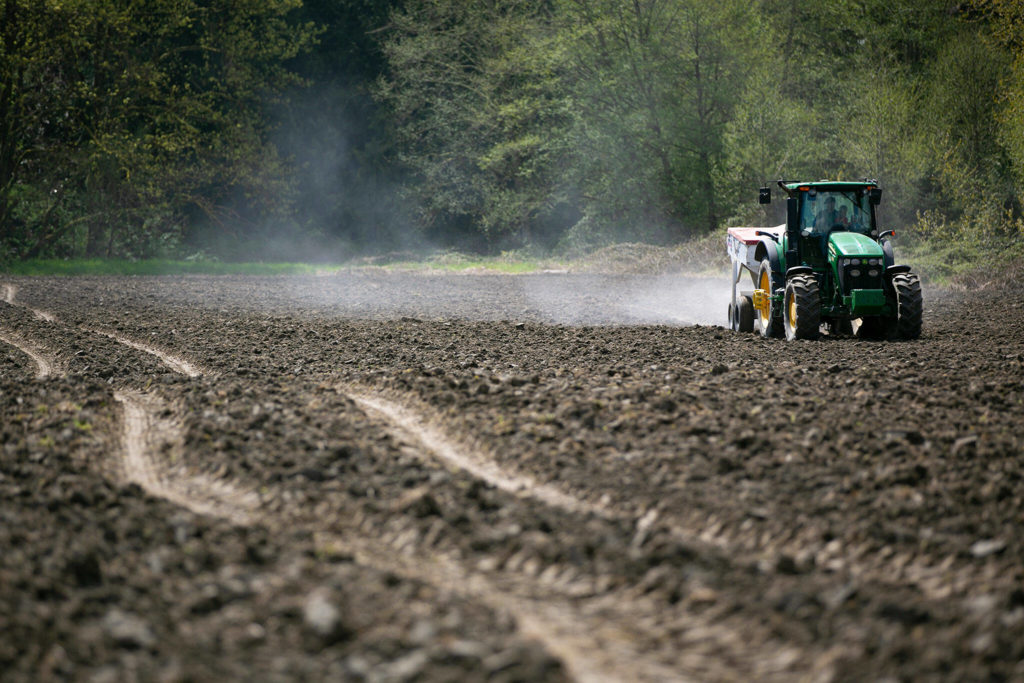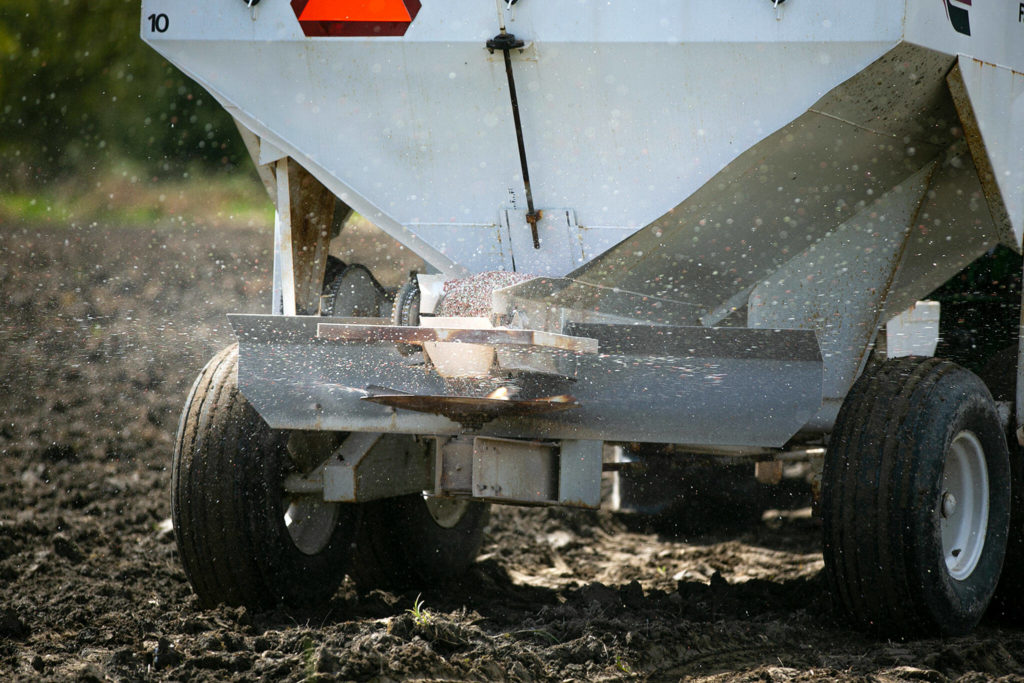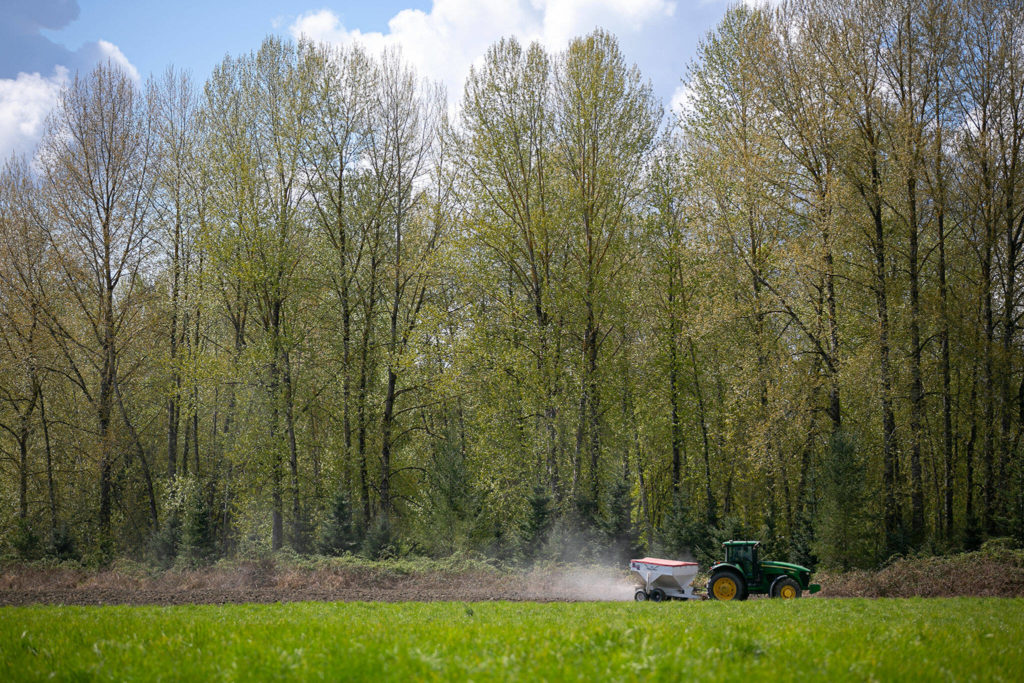ARLINGTON — Hay farmer Andrew Albert is paying twice as much for fertilizer as he did last year.
It’s just one example of steep price increases farmers in Snohomish County are facing as they get ready for spring planting. The cost of farm equipment, animal feed and gas are also up significantly.
“I’m considering what’s coming a survival year,” said Albert, a third-generation farmer in Arlington. “Already in farming, you don’t make money every year. This is definitely one of those bad years.”
He plans to cut back on fertilizer on his 1,500-acre farm and instead use more manure from a local dairy. It may mean smaller crop yields.
“I’m going to play it safe,” he said.
Locally, farmers are paying higher prices amid a global supply crunch.
At Wolfkill Feed & Fertilizer Corp in Monroe, a one-ton bag of fertilizer last year cost between $570 and $650, said supervisor Dave Gage. It has shot up to $1,200 to $1,300 a ton.
Gage said the price increases are the highest he has seen in 48 years at the farm supply business.
“We’ve seen it go up a little bit, and go back down, and nothing like this,” he said.
He estimates prices spiked an additional 10% after the Russian invasion of Ukraine in March.
“The cost for farmers to operate is just much harder this year,” he said.
The Skagit Farmers Supply Agronomy Center in Burlington mixes raw ingredients for fertilizer. The cost of those ingredients, such as nitrogen, has doubled, said Coby Beath, head of wholesale distribution. A lot of that nitrogen is imported from Russia and Europe.
“From what we’ve been told, this could continue to next year,” Beath said.
As the cost of farm inputs have soared, so too have food prices.
This month, commodity milk prices climbed to $25.80 per hundredweight, a record high, according to a market outlook from the U.S. Department of Agriculture.
“On our farm, we are not seeing the high prices of milk yet,” said Jim Werkhoven, a dairy farmer in Monroe. He said that’s because milk contracts are usually set a year ahead to lock in a price for farmers.
Higher milk prices don’t necessarily result in higher farmer profits, according to a report published earlier this year by the Washington State University’s School of Economic Sciences.
“Low dairy profit margins are likely to continue through most of 2022,” the authors wrote. “Price inflation on feed, labor and machinery are likely to outpace milk price gains, keeping profit margins low.”
For the past decade, dairy farmers have already operated on “paper thin margins,” a reason so many have gotten out of the business, Werkhoven said.
He hasn’t seen inflation this high since he started farming in the 1970s.
“I hope it’s shorted-lived and hope it peaks and stops,” he said.
Albert said his Arlington farm will raise prices to offset the higher costs. However, he worries about raising prices so much his customers won’t be able to afford hay.
“It may be so expensive that people are going to say, ‘I’m going to have to get rid of my horses,’ or ‘I’m not going to raise beef anymore,’” he said.
The 16-acre Hogstead Farm in Marysville doesn’t have to buy commercial fertilizer because it uses compost. Even so, the farm is spending 40% more on feed, owner Luke Conyac said.
The farm also has to pay more for gas to deliver its pasture-raised meats to customers in Seattle once a week.
As the busy farmers market season begins, Conyac is debating how much to raise prices. He said his customers already pay more for humanely raised meats from a sustainable farm.
“I’ve slowly tried to inch up my prices,” he said. “To come up with 40% in pricing is significant if you’re already priced at a premium.”
Conyac said the non-GMO feed he buys contains wheat and other grains. Global wheat supply is threatened by the war in Ukraine. Both Ukraine and Russia are major exporters of wheat.
Conyac said the early part of the COVID-19 pandemic “was an absolute boom” to his business, as people turned to local farms for food security.
“This spike in pricing is exponentially more difficult,” he said.
He is hopeful business will pick up over the summer, as he doesn’t see prices for feed or gas going down any time soon.
“I know what my books look like right now,” he said, “and I’m running month to month.”
Jacqueline Allison: 425-339-3434; jacqueline.allison@heraldnet.com. Twitter: @jacq_allison.
Talk to us
> Give us your news tips.
> Send us a letter to the editor.
> More Herald contact information.
